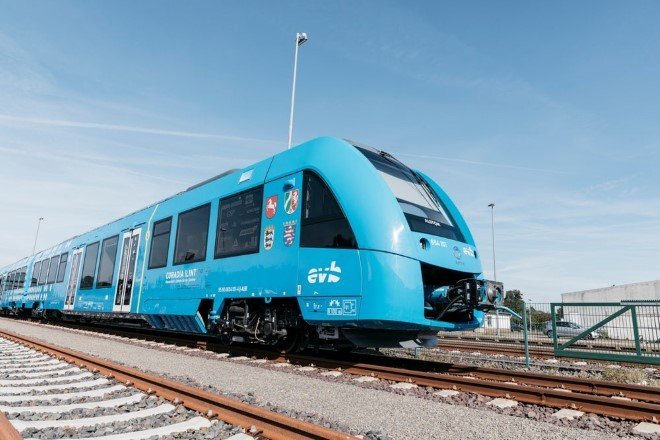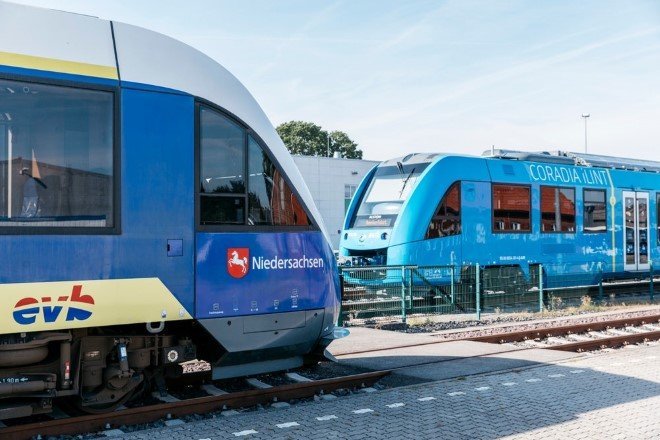The first ever hydrogen fuel cell powered train officially became available for public transportation in Germany. The two-car Alstom Coradia iLint came on the tracks on Eisenbahnen und Verkehrsbetriebe Elbe-Weser’s (EVB) Elbe-Weser network in Lower Saxony. Introduced to the government and industry dignitaries a day before the release at Bremeryorde, the Coradia iLint presents itself as a minimal carbon footprint and emissions transportation vehicle operating locally.

Image Credit: Alstom/René Frampe

Image Credit: Alstom/René Frampe
Despite the environmental advantages of electric trains, they are still quite impractical in terms of long distance traveling, since it is not possible to electrify every line except in small parts. Eventually, for long hauls, people have to rely on diesel-run passenger trains having a high carbon footprint. Nevertheless, in order to increase the frequency of electric trains in Germany, Alstom built the first two Coradia iLint in Salzgitter, Germany. Eventually Alstom will build 16 hydrogen-powered trains as part of an €81 million (US$94.5 million) contract.
Image Credit: Alstom/René Frampe
Image Credit: Alstom/René Frampe
The structural inspiration for the E-Train came from Alstom’s diesel-powered Coradia Lint 54, with its slightly curved front and contemporary design. The interior contains around 150 seats and a capacity to carry 300 passengers. Furthermore, the engine of the train is powered by hydrogen fuel cells, and contains a backup of lithium ion batteries functioning to store surplus electricity. Its powerful engine allows the vehicle to reach a top speed of 140 km/h (87 mph), while the acceleration and braking performs similar to the Lint 54. During trips, the Coradia iLints will replenish its fuel using a mobile hydrogen filling station that would consist of a 40-ft-tall (12-m) steel hydrogen gas cylinder located next to the tracks at Bremervörde station. According to the developers, each recharge will fuel the train for 1,000 km (620 mi). The company also mentioned that a more permanent container would replace the portable container by 2021.
Image Credit: Alstom/René Frampe
Image Credit: Alstom/René Frampe
The hydrogen powered trains currently function thanks to the German regional rail authority Landesnahverkehrsgesellschaft Niedersachsen (LNVG) over 100 km (62 miles) of track between Cuxhaven, Bremerhaven, Bremervörde and Buxtehude in replacement of the traditional diesel rails.
“With the two Coradia iLint trains and with the use of another 14 hydrogen trains from the end of 2021, we are the first passenger rail transport authority to replace existing diesel vehicles by emission-free vehicles, thus contributing better to the fulfillment of the climate protection goals.” says LLNVG chief Carmen Schwabl. “We also do this because about 120 diesel train sets in our vehicle pool will reach the end of their lifetime within the next 30 years, meaning we will have to replace them. The experience gained with this project helps us find a sustainable and practical solution.”
Image Credit: Alstom/René Frampe
Image Credit: Alstom/René Frampe
Hopefully, this new technology will lead to the start of a more sustainable future.
Source: Alstom (via: New Atlas)

